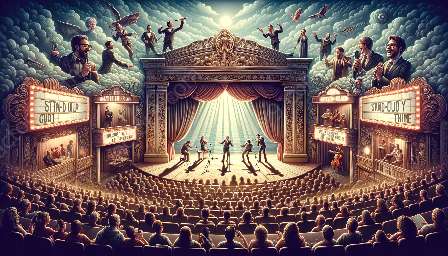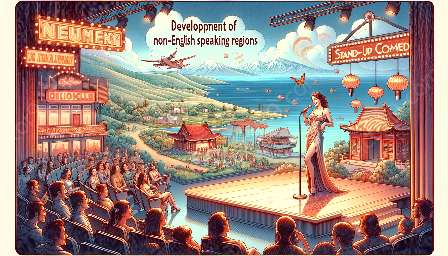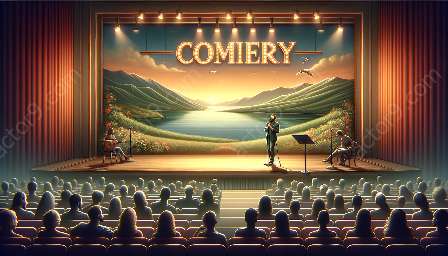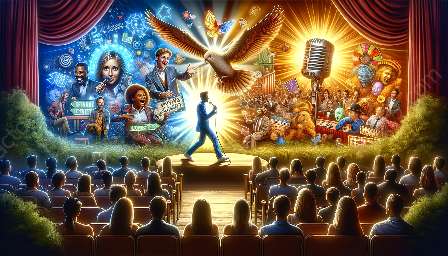Humor is a universal language that has the power to connect people from diverse backgrounds through its various styles and forms. Stand-up comedy and audience interaction represent two influential aspects of humor that have continuously evolved and shaped the comedy landscape.
The Diverse Landscape of Humor:
Humor comes in many forms, and understanding these diverse styles can enrich our experiences and interactions. From slapstick comedy to dry humor, each style has its unique way of eliciting laughter and engaging audiences.
Stand-up comedy, in particular, is a style of humor that involves a solo performer presenting a series of jokes and humorous stories to a live audience. This form of comedic expression allows for direct interaction with the audience, often resulting in improvised moments and authentic connections.
Styles of Humor:
1. Observational Humor:
This style of humor focuses on everyday situations and human behavior, often pointing out the absurdity in common occurrences. Comedians like Jerry Seinfeld are known for their observational comedy, where they skillfully dissect mundane aspects of life and turn them into comedic gold.
2. Satirical Humor:
Satirical humor involves using humor, irony, or exaggeration to critique and comment on societal issues, politics, and human behavior. It often involves a form of social commentary that may challenge audiences to think critically while eliciting laughter.
3. Physical Comedy:
Physical comedy relies on exaggerated movements, gestures, and slapstick humor to entertain audiences. Comedians like Charlie Chaplin and Buster Keaton were masters of this art form, using their bodies and facial expressions to bring laughter without saying a word.
4. Improvisational Comedy:
Improv comedy involves unscripted performances where the performers create dialogue, scenes, and characters on the spot. This style of humor often involves audience participation and quick thinking, adding an element of spontaneity and unpredictability to the comedic experience.
Embracing Different Styles of Humor:
Each style of humor has its own appeal and can resonate with different audiences. By embracing these diverse styles, comedians can connect with a wide range of people and create moments of joy and laughter that transcend cultural and social barriers.
Stand-up comedy, with its dynamic nature and direct audience interaction, allows comedians to showcase various styles of humor and gauge audience reactions in real time. This immediate feedback loop can inspire comedians to explore new comedic avenues and adapt their performances to resonate with different audience preferences.
Impact on Diverse Audiences:
Humor has the remarkable ability to bring people together, regardless of their backgrounds or beliefs. Through stand-up comedy and audience interaction, comedians can navigate the intricacies of diversity and inclusivity by crafting material that appeals to a broad spectrum of perspectives. This inclusivity fosters a sense of unity and understanding, paving the way for meaningful connections forged through laughter and shared experiences.
Conclusion:
The world of humor is a rich tapestry woven from various comedic styles, each offering a unique lens through which to view the human experience. Understanding and embracing these different styles can lead to a deeper appreciation of comedy's expansive reach and its profound impact on audiences worldwide. Through stand-up comedy and audience interaction, comedians continue to bridge the gaps between cultures, fostering laughter, empathy, and a shared sense of joy that transcends boundaries.
























